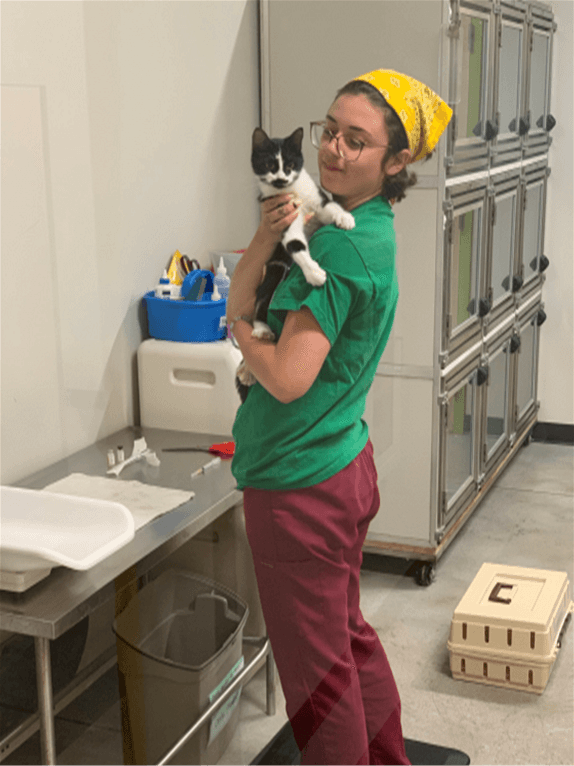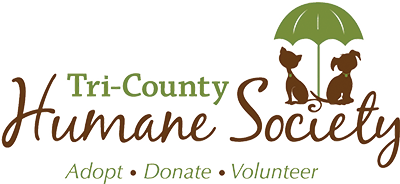
There are many different types of animal welfare groups operating under a variety of conditions that affect the way they function in their community. “Animal shelters” — like Tri-County Humane Society — are places that have a primary physical location to house and care for animals. “Animal rescue groups” are often foster-based organizations that do not have a primary physical space to house their animals and mostly utilize foster homes for their animals. Each organization may serve different purposes and source their animals differently.
Open admissions vs. managed admissions
The ways in which animals are admitted into organizations can vary widely based on the type of organization, their mission, the needs of the population they serve, and many other factors. The open admission model was widely common in the earlier years of the animal welfare movement. These facilities generally take in any animal at any time.
It may sound reasonable to have an open admissions policy, but there are several negative consequences to such practices. They may fill to capacity quickly, remain crowded, and struggle to keep up with the care and maintenance of their animals. Those conditions lead to higher staff burnout, failure to meet community needs, and often higher euthanasia rates. This is not to say open admissions are bad; they are certainly providing a service much-needed in certain areas.
Data shows animal welfare is more efficiently and humanely realized with a managed admissions approach, which is how Tri-County Humane Society operates. Shelters and rescues operating in this way will generally take most animals, yet regulate when and how they are admitted into their care based on a myriad of factors. The many resources needed to care for homeless animals (such as physical space, staffing, finances, time, available veterinary care, available foster homes) fluctuate on a regular basis. At any given time, the wait list to surrender an animal to Tri-County Humane Society may vary from 1-2 weeks up to 6-8 weeks and are done by appointment. Certain times of year there are higher demands for animal care and many factors affect those demands.
Room for emergencies
There are, of course, exceptions for urgent cases. Perhaps a person is suddenly hospitalized and cannot keep their pet, or an injured kitty is found outside in need of immediate care. The admissions process of TCHS works on a triage-based model. Animals who are not in immediate danger or need are scheduled out while a couple spots may be available for the urgent cases. Triage-based care is also evident in veterinary clinics as demand for veterinary care has skyrocketed. They schedule out routine appointments for preventative care and reserve a few appointments for urgent and emergent cases. This ensures all those in need are cared for while making sure the most vulnerable are expedited.
A better route?
An important factor in managed admissions is the potential for diversion from the shelter if there is a better option. If someone finds a friendly dog or cat in their neighborhood, asking neighbors, checking for a microchip, and/or posting on lost/found groups before bringing to a shelter may get pets to their owners in a quicker, less stressful process. Another example is outdoor community cats — those cats who are un-owned and live in the environment rather than as a pet. Many of those cats are not social and perhaps even feral, and admission to a shelter does not help the individual cat or the outdoor cat population. Return To Field or Trap-Neuter-Return is often more effective and appropriate. Of course, if an animal is truly in need of sheltering, TCHS will assist. But other resources may be more beneficial, which is why we have case-by-case discussions about animal needs and logically plan our admissions.
Recent research has shown that managed admissions by appointments “… better realizes the goals of shelters to serve the common good of animals and people in the most humane, equitable and effective possible way” (Hurley 2022). At TCHS, we understand it can be frustrating to be asked to wait several weeks to bring in animals that can no longer be cared for, but hope to raise awareness that it’s an important part of providing the best possible service we can to the animals and people in our community. Because of managed intake processes, we continue to have high placement rates and very low euthanasia rates. TCHS will continue to provide the best care and services we can by following the best practices modeled by experts and data in the animal welfare world.
If you enjoy reading up-to-date studies and literature, here are some great resources:
Frontiers | The Evolving Role of Triage and Appointment-Based Admission to Improve Service, Care and Outcomes in Animal Shelters (frontiersin.org)
Frontiers | Rethinking the Animal Shelter's Role in Free-Roaming Cat Management (frontiersin.org)
Frontiers | COVID-19 associated reduction in elective spay-neuter surgeries for dogs and cats (frontiersin.org)








